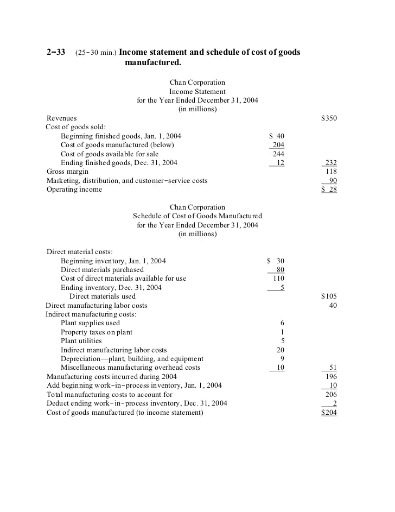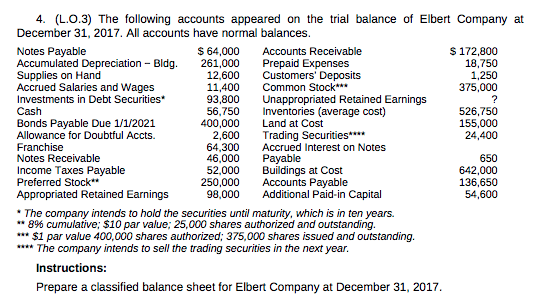Manage banking rules

Be sure to rename it versus using the auto-generated (“suggested”) name to avoid cluttering up your rule list when searching later. Be clear exercises: unit 3 financial accounting and concise when naming the rule and you’ll save yourself a headache down the road.
By staying abreast of these updates, businesses can prevent the need for undoing a rule, which can disrupt the flow of operations and lead to discrepancies in financial reporting. This action could have significant consequences for the overall financial management of the company. Lifting the rule might lead to possible reconciliation errors and reporting inaccuracies, impacting the integrity and transparency of financial records. Given the essential role of QuickBooks Online in adp run 2020 ensuring compliance with financial regulations and maintaining oversight, the decision to delete the rule requires careful consideration.
Try Process AI free
Understanding the significance of the rule list in QuickBooks Online is crucial for maintaining organized and transparent financial records, aligning with best practices for efficient financial management within the software. When choosing a rule to change in QuickBooks Online, users should first navigate to the banking or transactions tab and locate the ‘Rules’ feature. From there, they can review the existing rules and criteria set for categorizing transactions. Adapting transaction management involves customizing the criteria for how transactions are classified, providing a more tailored approach to organizing and analyzing financial data within the QuickBooks Online platform. Customizing transaction management through rule editing allows for greater control over how income and expenses are classified, saving time and reducing the margin of error in financial reporting. The final step in undoing a rule in QuickBooks Online involves removing the edited rule, ensuring that the changes are accurately reflected in financial reporting and compliance with accounting standards and regulations.
- For instance, these criteria may include transaction amount, payee name, or category keywords.
- This process is essential to maintain accurate financial reporting and ensure that all transactions are correctly accounted for.
- By establishing these parameters, users can instruct QuickBooks Online to recognize certain patterns or attributes within transactions and apply predetermined categorization rules.
- This can be achieved by navigating to the ‘Banking’ or ‘Transactions’ tab and selecting ‘Rules’ from the options.
How to Undo a Rule in QuickBooks Online
Editing rules in QuickBooks Online involves modifying the automated instructions that govern transaction categorization and management, allowing users to refine and customize their financial data organization. Accessing the rules list in QuickBooks Online provides users with a comprehensive overview of the existing automated instructions for transaction categorization and organization, enabling efficient rule management. This process involves accessing the ‘Banking’ tab within QuickBooks Online, where users can navigate to ‘Rules’ to view and modify existing automated instructions.
By adopting these proactive measures, users can reduce the likelihood of having to undo a rule and ensure efficient financial management within QuickBooks Online. This process is essential to maintain accurate financial reporting and ensure that all transactions are correctly accounted for. By aligning the rule with the latest financial operations and data, it allows for better tracking and analysis of income, expenses, and overall financial health.

This functionality is extremely useful for businesses wanting to streamline their accounting processes and ensure accuracy in recording financial transactions. To access and modify existing rules, users can navigate to the ‘Banking’ or ‘Transactions’ tab in QuickBooks Online and select ‘Banking Rules’. Selecting the rule to change in QuickBooks Online allows users to identify specific automated instructions and modify their criteria and actions for transaction management, facilitating tailored financial data organization. Staying proactive in rule management enhances the efficiency and reliability of accounting processes, positioning businesses to make informed decisions based on accurate financial data. Regularly exploring the various tutorials and guides provided by QuickBooks Online can empower users to maximize the capabilities of the software for better financial management.
Step 3: Editing the Rule
This not only saves time but also reduces the what is the income summary account risk of errors in transaction categorization, providing a more reliable financial overview. This list is an essential tool for managing financial transactions effectively, as it enables users to identify the specific rules that are impacting their transactions. By accessing the rule list, users can pinpoint the rules that need modification or removal, ensuring accurate financial reporting and streamlined transaction categorization. By navigating to the ‘Banking’ menu and selecting ‘Banking Rules,’ users can efficiently manage their automated transaction instructions. Within the rules list, users have the option to edit, delete, or create new rules to ensure accurate and streamlined transaction processing.
Accessing the rules list in QuickBooks Online provides users with an overview of the existing automated instructions for transaction categorization and organization, facilitating effective rule management. In QuickBooks Online, rules are a powerful tool for automating and streamlining your accounting processes. There may come a time when you need to undo a rule due to changes in your business needs or errors in the rule setup. In this article, we will explore the process of undoing a rule in QuickBooks Online, step by step, to help you efficiently manage your financial transactions. This process allows for the optimization of rule management, ensuring that only pertinent rules are in place to categorize transactions accurately. By accessing the ‘Banking’ menu, users can select ‘Banking Rules’ and then spot the rule that needs to be deleted.
To begin the process of undoing a rule in QuickBooks Online, you need to access the rule list, which contains all the predefined criteria and instructions for transaction management and categorization within the software. By fine-tuning the rule management, users can ensure that the platform accurately categorizes transactions, providing a clear and organized overview of the company’s financial activities. Effective rule management is essential for maintaining accurate financial records and making informed business decisions within QuickBooks Online. By optimizing rule management, users can customize their automated guidelines to better suit their specific financial needs, further enhancing the efficiency of transaction categorization and management within QuickBooks Online.
After choosing the rule, users can click on the ‘Delete’ option and confirm the deletion. This action will remove the rule from the system, streamlining the rule management process and reducing clutter in the transaction categorization workflow. This process optimizes rule management and ensures that the system is not cluttered with unnecessary or outdated rules. To select a rule for deletion, users should first review their existing rules to identify those that are no longer required or are creating conflicts in transaction categorization. They can then navigate to the Rules section in QuickBooks Online, locate the specific rule, and proceed with the deletion process. Changing rules in QuickBooks Online entails making adjustments to the automated instructions that dictate transaction categorization and management, allowing users to adapt their financial data organization.
